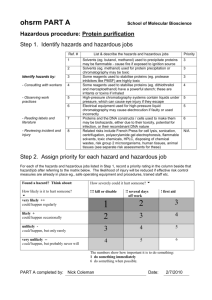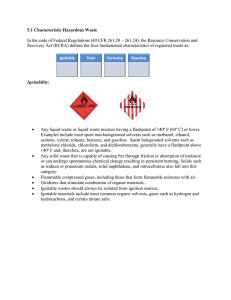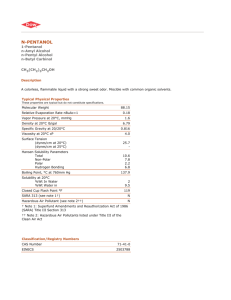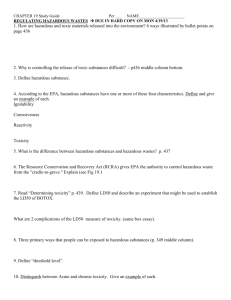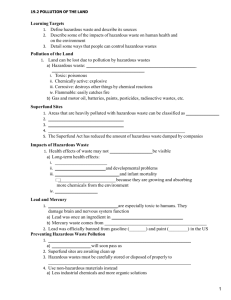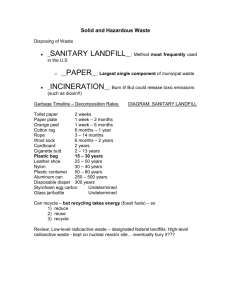Laboratory Waste Disposal Guide
advertisement
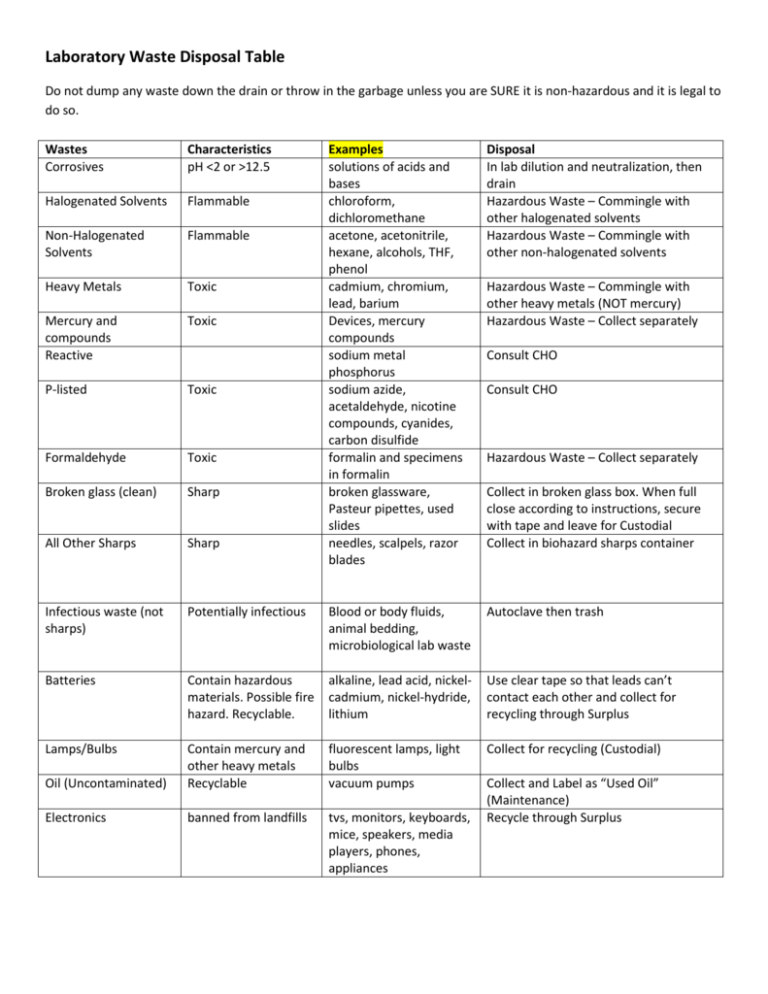
Laboratory Waste Disposal Table Do not dump any waste down the drain or throw in the garbage unless you are SURE it is non-hazardous and it is legal to do so. Wastes Corrosives Characteristics pH <2 or >12.5 Examples solutions of acids and bases chloroform, dichloromethane acetone, acetonitrile, hexane, alcohols, THF, phenol cadmium, chromium, lead, barium Devices, mercury compounds sodium metal phosphorus sodium azide, acetaldehyde, nicotine compounds, cyanides, carbon disulfide formalin and specimens in formalin broken glassware, Pasteur pipettes, used slides needles, scalpels, razor blades Disposal In lab dilution and neutralization, then drain Hazardous Waste – Commingle with other halogenated solvents Hazardous Waste – Commingle with other non-halogenated solvents Halogenated Solvents Flammable Non-Halogenated Solvents Flammable Heavy Metals Toxic Mercury and compounds Reactive Toxic P-listed Toxic Formaldehyde Toxic Broken glass (clean) Sharp All Other Sharps Sharp Infectious waste (not sharps) Potentially infectious Blood or body fluids, animal bedding, microbiological lab waste Autoclave then trash Batteries Contain hazardous materials. Possible fire hazard. Recyclable. alkaline, lead acid, nickelcadmium, nickel-hydride, lithium Use clear tape so that leads can’t contact each other and collect for recycling through Surplus Lamps/Bulbs fluorescent lamps, light bulbs vacuum pumps Collect for recycling (Custodial) Oil (Uncontaminated) Contain mercury and other heavy metals Recyclable Electronics banned from landfills tvs, monitors, keyboards, mice, speakers, media players, phones, appliances Hazardous Waste – Commingle with other heavy metals (NOT mercury) Hazardous Waste – Collect separately Consult CHO Consult CHO Hazardous Waste – Collect separately Collect in broken glass box. When full close according to instructions, secure with tape and leave for Custodial Collect in biohazard sharps container Collect and Label as “Used Oil” (Maintenance) Recycle through Surplus
